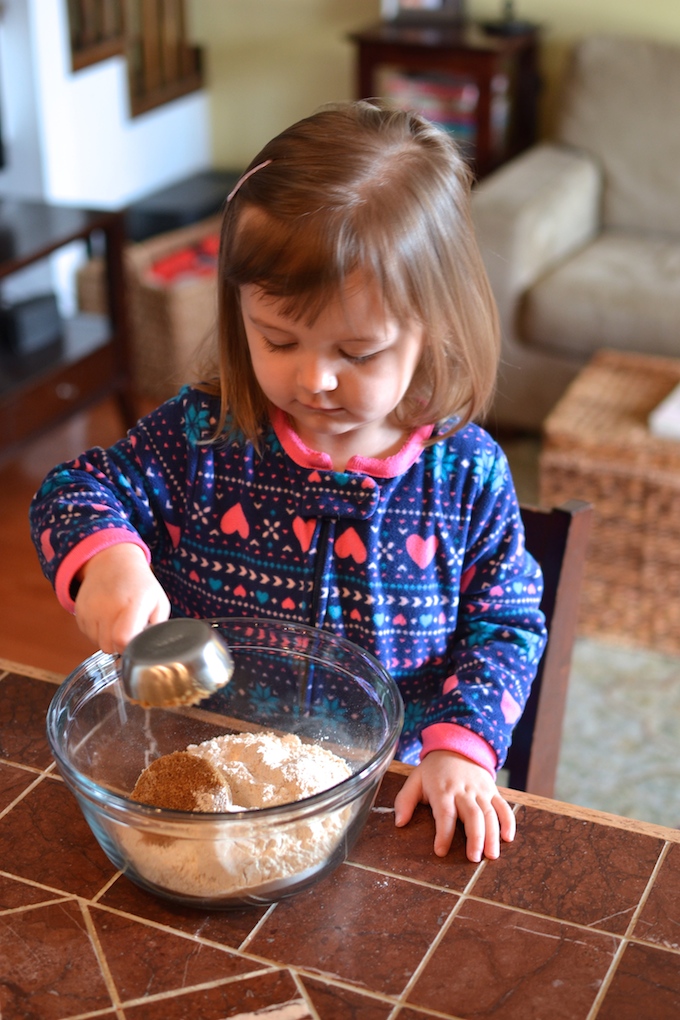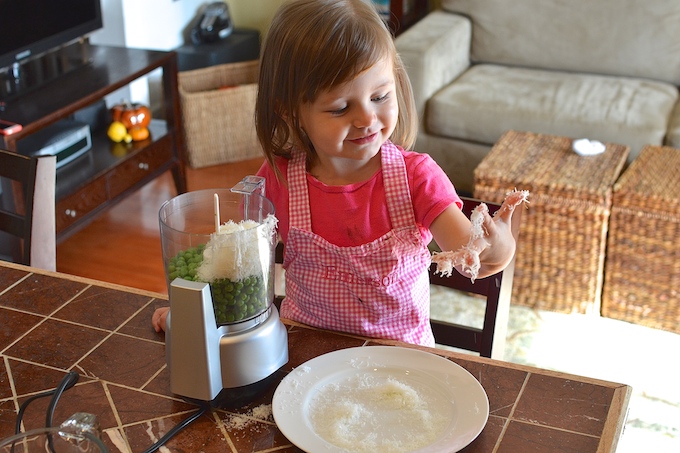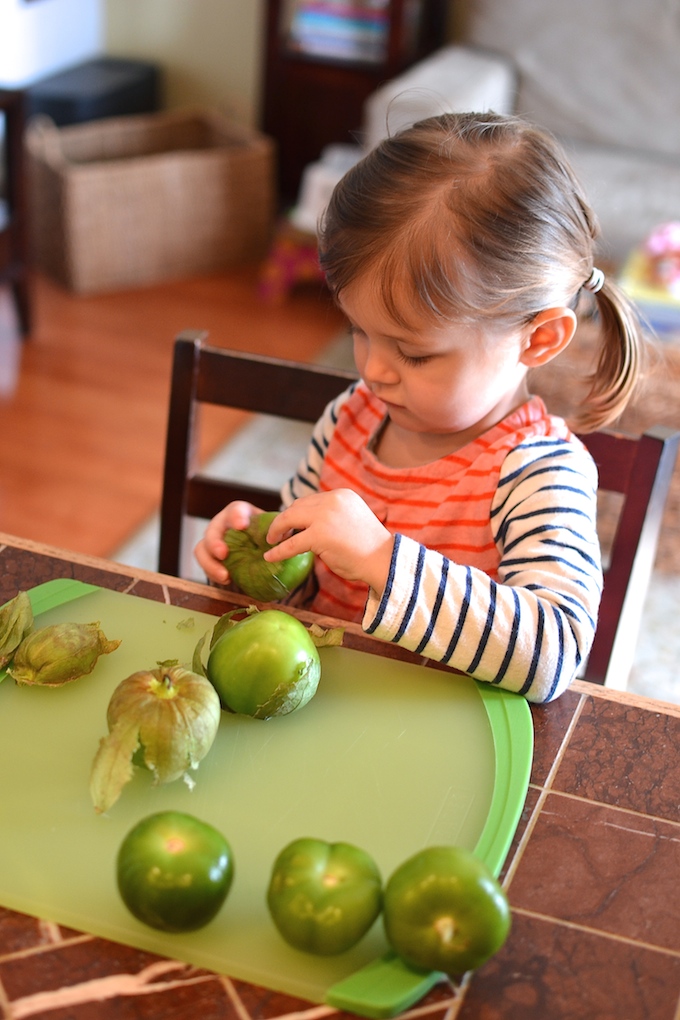Whether you classify your kids as “picky” or not, EVERY kid has their days (some more than others) when they just won’t eat. We’ve heard it all, right?
“I’m not hungry.”
“I don’t want that. I want ______(insert favorite familiar food).”
“I don’t like ______(insert whatever new food you’ve just put on their plate).”
And from little ones, sometimes it’s just a flat-out, “NO!”
My little one, who is not quite 3 years old, is not a particularly picky eater, but is definitely a bird-like eater, in that she just doesn’t eat large amounts of food. She’s not a snacker and sometimes seems to go on days-long food strikes where she eats next to nothing at all, so I’m constantly worried that she’s not getting enough to eat. Somehow, though, she manages to stay alive and thrive. It’s funny how our bodies just know what they need, huh?
In the few short years that I’ve been feeding a child, I’ve come to my own conclusions about how to best encourage her to try new foods. I hope some of these suggestions may work for you and your families, especially those with particularly “picky” little ones.
1. Engage your children in the kitchen.
I’m giving it all away right up front! This is the number one tip I can suggest for getting your kids to try new foods…and you know what? It’s the truth. I hear it time and time again when I talk to other moms about cooking with their kids. There is a night and day difference in my toddler’s attitude toward trying new foods if she has had some hand in helping prepare that food. Here’s an example: While preparing lunch one day, Em helped me pour a 1/2 cup of frozen edamame into a small pot of water. (Can you even call that helping?! Yes.) She couldn’t shove them in her mouth fast enough. That same day, I made dinner on my own without any help and she wouldn’t even touch her zucchini. Now although this is only one example, it is one of many not only in my house, but I’m positive in many other homes where kids are in the kitchen. If you’re reluctant or don’t think your kids would respond similarly, my advice to you is: Do it anyway. Try it! And if it doesn’t work the first time (or the second time…), try it again.

2. Talk about food…a lot.
Perhaps this is just because we love to cook in our family, but we talk about food A LOT. We grocery shop together, we purchase strange new ingredients to try, we read books about food, we play with toy food in Em’s play kitchen, we SING about food, etc., etc.. After breakfast and usually at least once more throughout the day, I’ll often mention what is coming up for dinner to peak Em’s interest. You can also put food names into familiar songs, or make up your own silly chants or rhymes. I made up a recent favorite on the fly while walking home from the park one day. We were having turkey tacos with black beans and rice for dinner, so I started chanting, “Turkey and beans and rice…yummy, yummy, yummy!” Totally simple, but catchy, and Em loved it. Now I can throw any food names into that chant and she recognizes it as a fun song that gets her excited about dinner.
3. Give choices.
Kids are more likely to cooperate if they feel as though they have some say in the matter. We’re all for giving choices wherever we can, and it seems to work especially well when it comes to food. This can work in a few ways:
- Give little ones “controlled” choices, meaning YOU are choosing what the options are. The child just gets to choose between the choices. It’s a win-win. “Would you like strawberries or mango for lunch?” “Would you like yogurt or cottage cheese with dinner?” I’m happy with either option and she’s happy that she has some control over what she’s choosing to eat.
- Allow your child to serve himself, with the expectations that he take some of everything and he can always go back for more. Even toddlers can do this, with some hand-over-hand assistance. You may be surprised at the positive effect this strategy can have at getting kids to try something new. As a bonus, you can teach them about portion control. If they fill up and still have half a plate of food left, use that as a teaching moment to talk about taking smaller servings at the start next time.
4. Let them explore and “play” with their food.
This tip goes directly against what you may remember your mother or grandmother (or Randy and Ralphie’s mom from A Christmas Story) telling you, “Don’t play with your food…eat it!” Many of the learning activities that connect with the recipes I share here involve “playing” with your food in some way. Let them get their hands in it, manipulate it, stir it, smash it… It’s an easy way for kids to become familiar with a new food, without feeling pressured to taste or eat it right away. And you never know…they may actually sneak a taste.

5. Try something new yourself.
We all have things we don’t like to eat. For me (and my sister), it’s mushrooms. Seriously can’t stand them. Every so often, I try them again, thinking that maybe I’ve changed my mind. And even though the outcome is always the same, at least I gave it a shot. That’s the lesson I’d like to pass onto Em. You don’t have to like everything (almost everyone has some things they truly won’t eat), and that’s okay. But give it another try. You can also try something brand new that you’ve never tried. Last summer, Em and I came across a starfruit in the grocery store. We thought it was interesting, so we brought it home, tried it and loved it. How ’bout that.
6. Take them food shopping and encourage them to pick out something new.
In line with my last suggestion, challenge them to choose a new healthy food for the family to try. Farmer’s markets are great for this one because the produce is both local and seasonal, so the fruits and vegetables are likely to taste their best. Once they pick something out, brag to your husband, mom, grandma, neighbor, best friend, etc. about the cool, new vegetable that s/he picked out for the family to try. Kids love hearing other people praise them! Then of course, get them in the kitchen to help figure out how to prepare this new food they’ve picked.

7. Start small.
Both with how many new foods you offer your child AND with the size of the portion you offer, start small! To a child, it may be overwhelming to see three brand new foods on their plate, or a whole bowl of broccoli. They’re less likely to fight that ONE new food choice at dinner if it’s on the same plate as one or two of their favorite foods. And 1 or 2 PIECES of broccoli in their bowl isn’t quite so intimidating.
8. Figure out your child’s “best” meal and start there.
Breakfast, lunch or dinner? At which meal does your child eat the most? At which meal is your child the most adventurous when it comes to new foods? At which meal is your child the most awake, alert and happy?
- If it’s breakfast, try incorporating more new fruits and vegetables into your child’s favorite breakfast foods. Add spinach to eggs, add peppers or mushrooms to little baked omelet cups, add fruit to oatmeal or on top of toast, add pureed fruit to plain yogurt, or add greens to a breakfast smoothie, and always serve fruit on the side.
- If it’s lunch (like my little one), add some fruits and vegetables to their plate to eat alongside their sandwich. Sliced cucumber, olives, avocado cubes, and bell pepper strips are favorites in our house. Or skip the sandwich altogether and try a soup! Soups are a great way to encourage your child to try new foods. Em’s current favorite is Split Pea Soup (which freezes very well, so you could freeze small lunch-size portions).
- If it’s dinner, try to serve at least one vegetable and fruit alongside your main entree. Or better yet, make them your main entree for Meatless Monday! Dinner is also a great opportunity to turn vegetables into familiar fries (sweet potato, carrot, parsnip, yams, etc.) Or try roasting your vegetables to give them a sweet flavor.
9. Try not to stress about it!
I give this advice knowing just how hard it is to do! Em’s always been pretty good about trying new things, in part (I hope) because I keep giving her new things to try. But there are those times when I really want her to try something new I’ve prepared and she just flat-out refuses. In those times, I have to remind myself to not stress about it. It will only make me more frustrated and it certainly won’t encourage her to actually eat the food. So, in those moments when she says, “No!,” one little word has eased my stress…. “Okay.” And we leave it at that. I once read somewhere that there are 3 things you can’t ever make kids do: eat, sleep and poop. Isn’t that the truth?
10. Keep trying.
It likely won’t happen overnight, but it also likely won’t happen if you stop trying. The more exposure kids have to new foods, the more likely they’ll engage with those foods … simply because those foods are more familiar. Start trying to introduce new foods and flavors. And keep trying.
It’s too important.
What are some of your suggestions for getting kids to try new foods? Share your ideas in the comments below!
 Samantha says
Samantha says
March 30, 2016 at 8:12 AMSUCH good tips! I feel like I do a pretty good job, but I have never thought of some of these. Brilliant! I can’t wait to try them!
 Sally says
Sally says
March 30, 2016 at 9:03 PMThanks, Sam! It’s daily, huh? Good luck! Let me know how it goes 🙂
 Jenni says
Jenni says
April 16, 2016 at 7:32 AMI am going to try some of these with Ben!
 Sally says
Sally says
April 18, 2016 at 3:33 PMLet me know if any of the tips are helpful! Just gotta keep trying 🙂